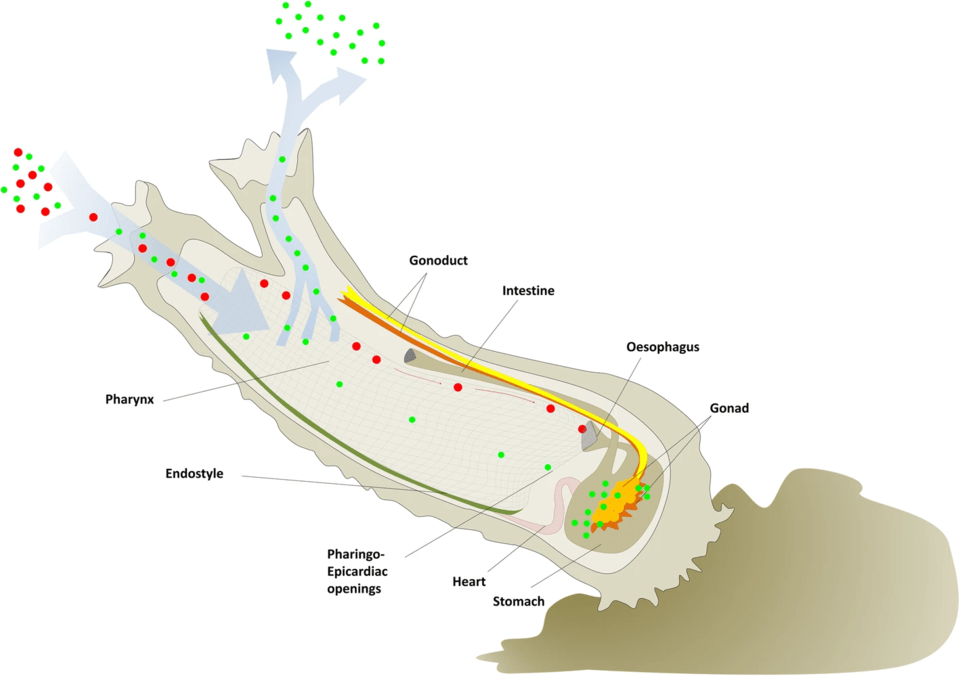The problem of marine microplastics pollution is steadily getting worse, so it’s vitally important to monitor the amount of such plastic waste that’s currently present in the world’s oceans. According to a new study, a simple sea creature may better allow scientists to do so.
Microplastics are created when larger pieces of discarded plastic degrade and fall apart. The resulting particles are very small – even microscopic – and make their way into the flesh of fish that eat them. When people eat those fish, they in turn consume those microplastic particles, potentially leading to health problems.
Because the particles are so tiny, it’s difficult to efficiently gather them from the ocean. However, scientists recently discovered that microplastics readily accumulate in marine invertebrates known as tunicates. Found in plentiful numbers throughout the world, these creatures continuously draw in and expel large amounts of water, since they’re filter feeders.

A. Valsesia et al. via Creative Commons (https://creativecommons.org/licenses/by/4.0), adapted by N. Hanacek/NIST
In lab tests, tunicates by the scientific name of Clavelina robusta (aka sea squirts) were kept in tanks containing polystyrene nanoparticles, then “harvested” and put through a chemical digestion process. That process broke down the tunicates’ tissue, leaving the microplastics and other residual organic compounds behind. A technique known as asymmetrical-flow field flow fractionation was then used to separate the microplastics from those compounds.
Next, the plastic nanoparticles were placed on a custom-designed chip that caused them to cluster together, making them easier to detect and quantify. Finally, Raman spectroscopy was utilized to determine their chemical structure.
Although the scientists knew that these particles were polystyrene, samples gathered in the wild could consist of numerous types of plastic. Knowing which ones were most common, and in what amounts, could help identify their source.
The research was carried out by a team from the US-based National Institute of Standards and Technology (NIST) and the European Commission’s Joint Research Centre. It is described in a paper that was recently published in the journal Microplastics and Nanoplastics.
Source: NIST
Source of Article